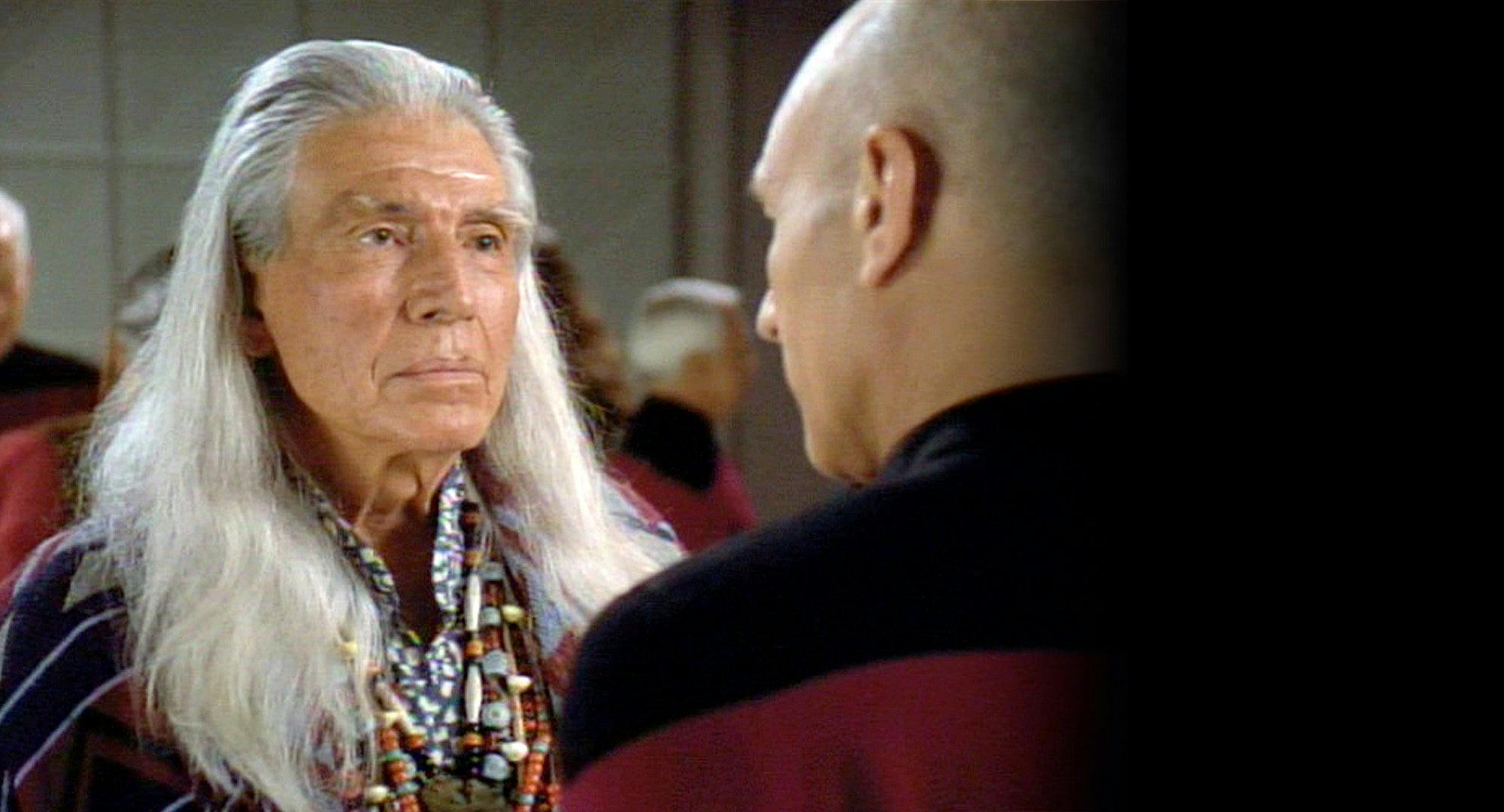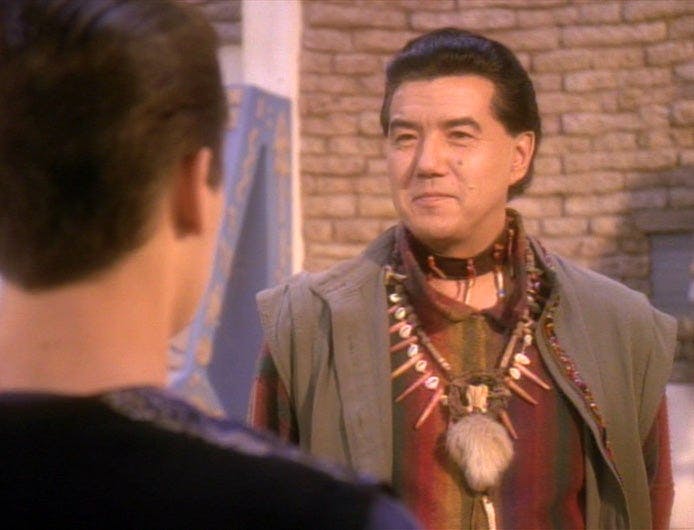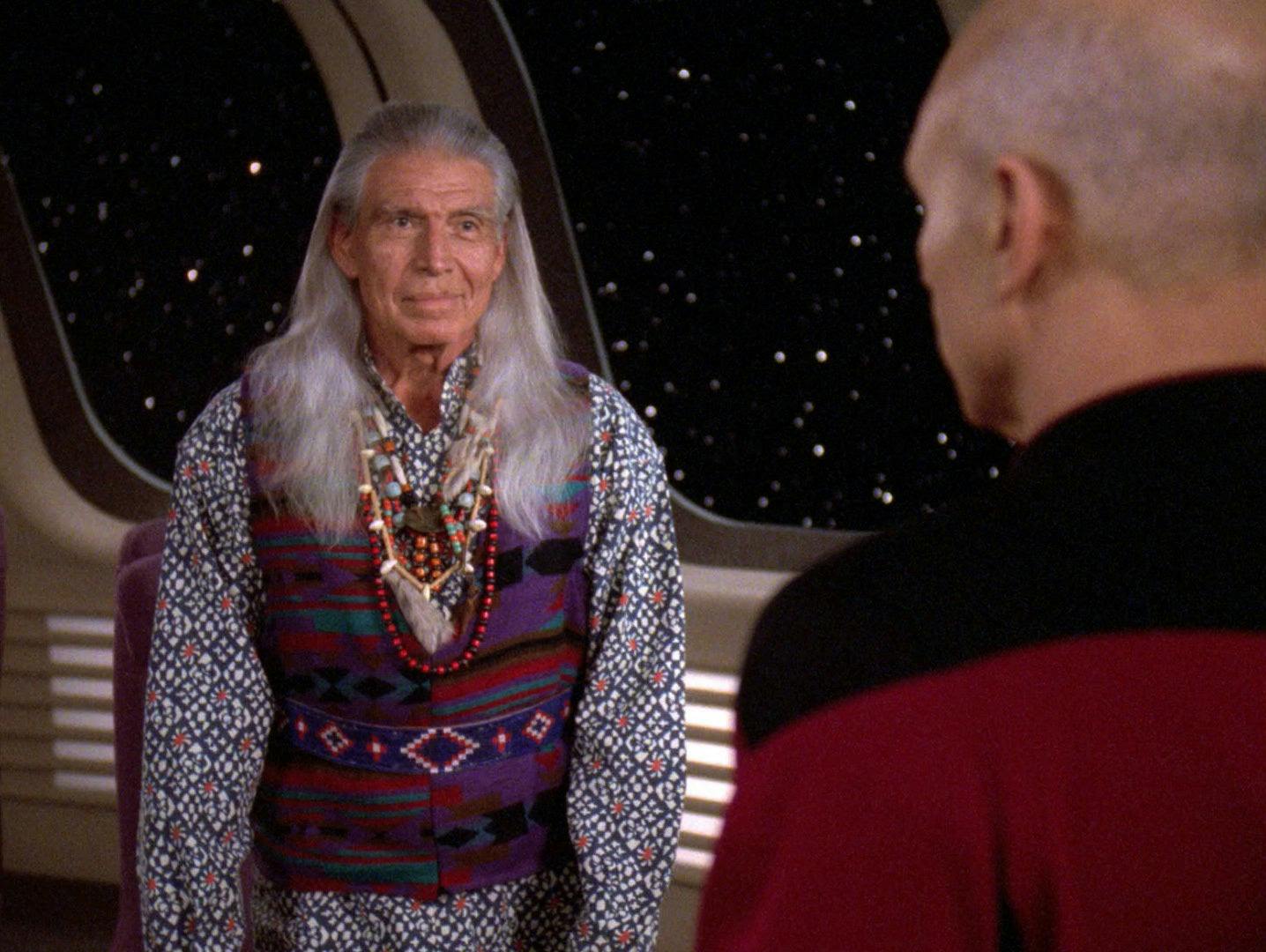Published Oct 10, 2022
How Star Trek: The Next Generation Took On Indigenous American Representation
A member of the Choctaw Nation parses through TNG's 'Journey's End.'

StarTrek.com
Star Trek: The Next Generation’s “Journey’s End” explores the fallout after the Federation reaches a diplomatic agreement with the militaristic Cardassian Empire. After a great deal of strife and diplomatic maneuverings, the Federation has agreed to cede the planet Dorvan V to Cardassia. A simple enough agreement, if the planet were uninhabited, but there is a catch; a Native American tribe that became spacefaring in search of a new home after facing displacement on Earth had already colonized the planet.
Although Jean-Luc Picard is often seen as a benevolent figure — one of the best captains in a history of great captains — it is here that we witness an instance when he was willingly an instrument of wrong-doing. Picard is tasked by the Federation with moving the people to make room for Dorvan’s new Cardassian overlords. Importantly, the Captain of the Enterprise does see how this act is unfair. He tries to help his commanding officer understand the difficulty of asking the tribe to move. However, he is informed that this is a non-negotiable situation. In a way, that lets us know that the Federation is but another bureaucracy uninterested in the trivialities of human life. There are things at work that supersede the concerns of Picard. If he cannot do it, someone else can. No matter what, the tribe must go.

StarTrek.com
Historically, Indigenous Americans have faced violent displacement, repeated treaty violations, and genocide. In the real world, Indigenous nations, like my own, have experienced violent colonization tied to an ideology of white supremacy. Part of what makes Star Trek wonderful is that it looks forward to a time when humans are at peace with one another, and one hopes, justice has been restored. But this episode lays bare how even the Federation has the potential to reproduce the same colonial dynamics that Native Americans continue to face now in the 21st Century. This thread even carries through into the film Star Trek: Insurrection, which shows a corrupt officer of the Federation working to displace another group of settlers (non-Native, in this case), the Ba’ku, in order to mine resources from their planet.
The first time I saw “Journey’s End” as a young man, the historical parallels were lost on me. I did not see how the Federation making a decision that impacted the day to day lives of Native people echoed the history of the United States taking advantage of Native people in the past. Nor did I see the way Picard was concerned about how this decision displaced hundreds of people; yet, he was willing to execute the plan because, well, that was what he was ordered to do.
However, now, as a scholar of race and as a Black man who is a member of the Choctaw Nation of Oklahoma, I see the racial and colonial undertones clearly. I see how the actions of the Federation are, in essence, evil and their lack of care towards the Native people. Part of episode writer Ronald D. Moore’s message in this story was that, if Dorvan’s inhabitants were white people, the Federation might have made the same decision, but the fact that they were Native made the choice all the more clear.
It’s also clear that Picard is placed in an impossible position. If he does the will of his superiors, the Native people will be displaced and, essentially, homeless. Yet, after talking to the leaders of the Tribe, it is clear that they have no intention of leaving. They do not even entertain the possibility of going elsewhere. Their elders feel a connection to the land, and the idea of finding another home is a nonstarter. Tensions rise when a Cardassian emissary shows up to survey the land. No one has been relocated, and violence seems imminent. What’s more, we learn that one of Picard’s ancestors was directly responsible for killing a great number of Native people in the past. This has left what the Tribe calls a “bloodstain” for which Picard has to atone for. It’s a real crisis — one that requires nuance to fully process.

StarTrek.com
In the end, the Cardassians allow the Native people to stay on the land and, allegedly, peace reigns. Like all government bureaucracies, the Federation still has ample room for improvement in certain policy areas. Even Picard seems to have learned from his experiences in “Journey’s End” by the time he instinctively knows to defy direct orders and aid in the rescue of the Ba’ku in Insurrection.
I wish the Federation had asked — Can we trust the Cardassians to keep their word? If we watch this episode with historical precedence in mind, it makes little sense that the Cardassians would allow the Native people to remain on the land. The most likely result, after Picard and the Enterprise have moved on to another adventure, is that the Native people will incur the wrath of the Cardassians, thereby continuing the history of violence and displacement that Native people have always endured. And that bloodstain that the Native people say has been cleansed from Picard at the end? It remains; some might even say that it deepens.
A Timeline Through the Star Trek Universe
This article was originally published on November 6, 2019.
Lawrence Ware (he/him) is a professor of philosophy at Oklahoma State University and co-director of the Center for Africana Studies. Tweet him at @law_writes.
Stay tuned to StarTrek.com for more details! And be sure to follow @StarTrek on Facebook, Twitter, and Instagram.

